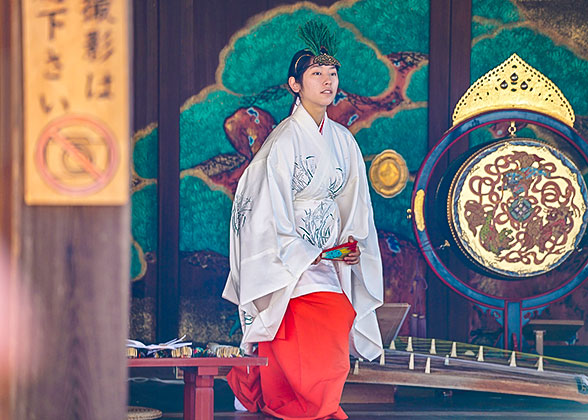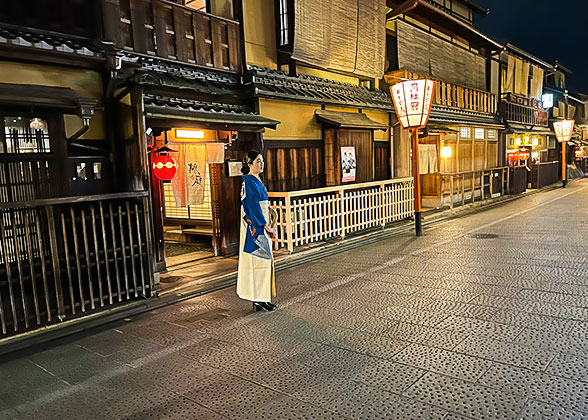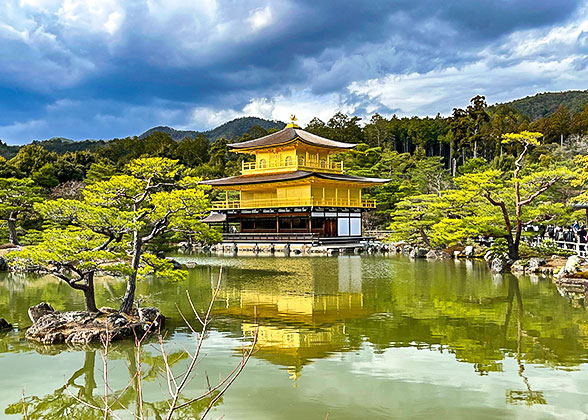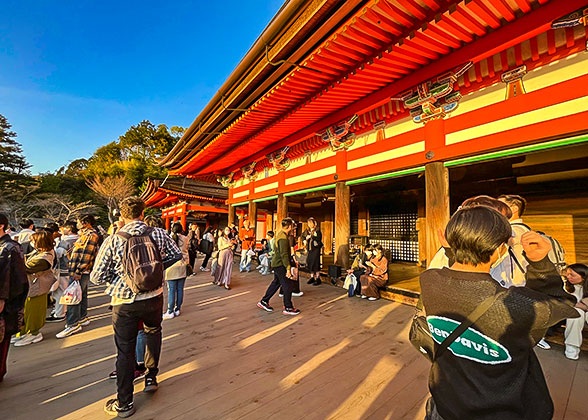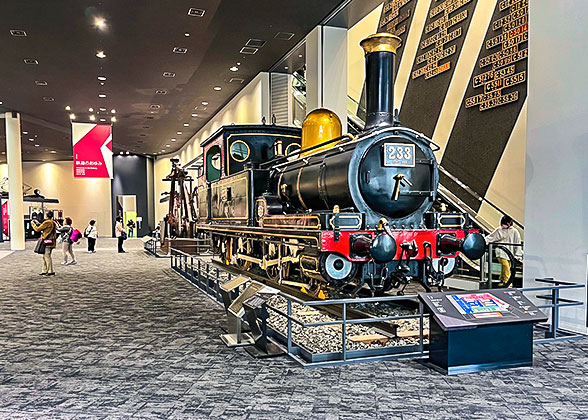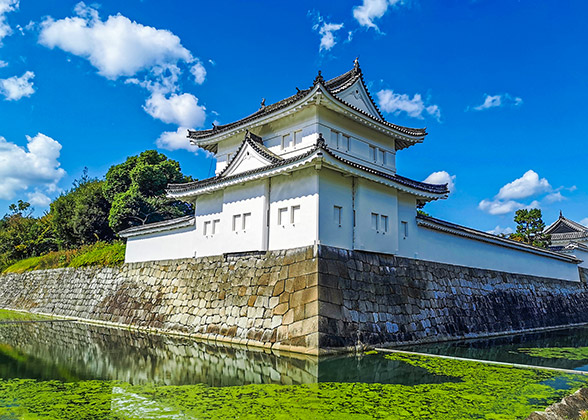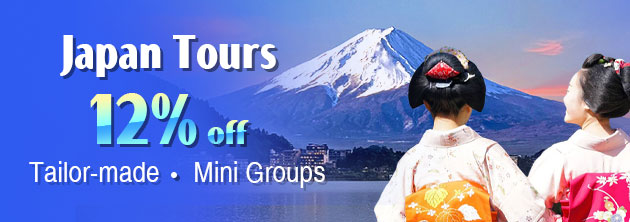Kyoto Travel Guide
Location: Kyoto Prefecture in the north of Kansai, in Honshu Island, eastern JapanClimate: subtropical maritime monsoon climate
Area: 828 square kilometers (204,602 acres)
Population: about 1.46 million
As one of the important cities in Kansai, Kyoto was the capital for more than 1,000 years before 1868. Such long history contributes to the rich culture and countless historical sites, especially delicate religious buildings, such as Kinkaku-ji Temple and Kitano Tenmangu Shrine. Nowadays, Kyoto is featured not only by tradition but also by modernization. Take it developed transport system as an example, the train, Shinkansen, subway, and bus will take you to spots within Kyoto and its nearby cities, including Osaka, Tokyo, Nara, and Kobe.
Kyoto Attractions – Top Places to visit
In Kyoto, there are many tourist attractions for visitors to explore: various shrines and temples with hundreds of years of history, parks and bamboo forests with natural beauty, the prosperous business streets gathered by restaurants and various shops with the strong life atmosphere of local people, and theme museums & villages with Kyoto’s cultural heritage.
Kyoto Photos & Kyoto Videos
You May Like
-
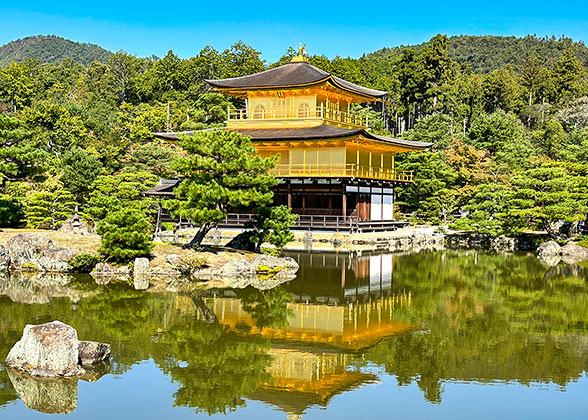 7 Days Japan Mini Group Tour to Tokyo - Mt. Fuji - Kyoto - Nara - Osaka from USD2155
7 Days Japan Mini Group Tour to Tokyo - Mt. Fuji - Kyoto - Nara - Osaka from USD2155 -
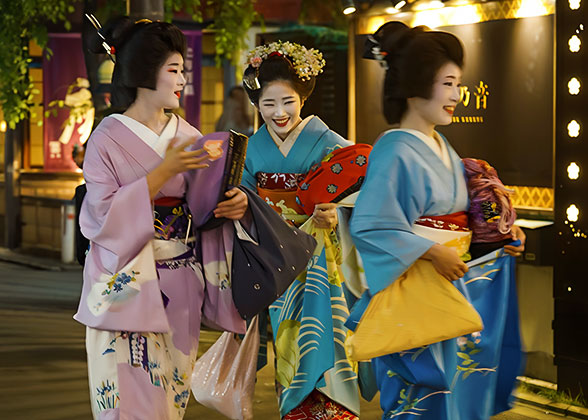 8 Days Mini Group Tour: Tokyo - Hakone & Mt. Fuji - Kyoto - Nara - Osaka - Hiroshima - Osaka from USD2771
8 Days Mini Group Tour: Tokyo - Hakone & Mt. Fuji - Kyoto - Nara - Osaka - Hiroshima - Osaka from USD2771 -
 10 Days Private Tour of Tokyo - Mt. Fuji - Nagoya - Takayama - Shirakawa-go - Kanazawa - Kyoto... from USD3756
10 Days Private Tour of Tokyo - Mt. Fuji - Nagoya - Takayama - Shirakawa-go - Kanazawa - Kyoto... from USD3756
Tour Planning
To visit most attractions in Kyoto, you usually need to spend 4 days or more time here. You can divide Kyoto into 5 parts: around Arashiyama, around Fushimi Inari Taisha, around Ginkaku-ji Temple, Kiyomizudera Temple, and Kitano Tenmangu Shrine. The major attractions in Kyoto are scattered around the 5 places. Every day, you can visit 3 or 4 attractions on average.To rest in Kyoto, you can live near Kyoto Station as the traffic here is very developed. Or, Kawaramachi-dori Street in downtown area is also a good choice. It is very bustling and convenient for shopping. You can get there from Kyoto Station in 7 minutes by subway. Living around Gion is time-saving for visiting tourist attractions. For example, from here, you can get to Kiyomizu-dera Temple, Ninenzaka, and Sannenzaka within 20 minutes’ walk.
-
 Top 10 Things to Do in Kyoto
Top 10 Things to Do in Kyoto
-
 Where to Stay in Kyoto
Where to Stay in Kyoto
-
 Best Day Trips from Kyoto
Best Day Trips from Kyoto
-
 Best Ryokans in Kyoto
Best Ryokans in Kyoto
-
 How Many Days Do You Need in Kyoto
How Many Days Do You Need in Kyoto
-
 Kawaramachi Kyoto
Kawaramachi Kyoto
-
 Nara Day Trips from Kyoto
Nara Day Trips from Kyoto
Kyoto Weather & Best Time to Visit
Kyoto’s spring from March to May is featured by warm weather and its significant temperature difference between morning and night. Traveling in Kyoto in summer means you need to watch out for the typhoon and the frequent rains, especially in August. The extreme weather in summer will extend to September in autumn, but after that, Kyoto is the best period when the temperature is pleasant and the humidity is mild. In winter, apart from coldness, Kyoto is very dry.March, April, October, and November are the best periods to visit Kyoto, From March to April, Kyoto becomes warm gradually and the rainfall is low. From October to November, it is cool in Kyoto and the rain drops dramatically when maple leaves turn red gradually. To see red leaves without bothering crowds, click 5 Less-Crowded Places to See Maple Leaves in Kyoto & Japan Fall Foliage Forecast in 2025. To get the latest information about the blossom date of Sakura or where to see cherry flowers in Kyoto, please continue read Japan Cherry Blossom Dates Forecast in 2025 and Best Places to See Sakura in Kyoto.

Kyoto's Sakura
|
Kyoto Transportation
Kyoto’s traffic system consists of Shinkansen with a comfortable environment and the fastest speed, JR trains, and several private companies’ various trains. As there is no airport in Kyoto, if you plan to go to Kyoto by plane, you need to land at Osaka’s Kansai International Airport or Osaka International Airport first, and then take trains or buses to get here. The developed transportation nets in Kyoto connect its nearby cities, like Osaka, Tokyo, Nara, Kobe, and Wakayama. For places far away in Japan, you can get here by transferring trains multiple times.In addition, taking subway or bus to visit Kyoto is also very convenient. For example, you can go to Kinkakuji Temple, Fushimi Inari Taisha Shrine, and Nijo Castle
To avoid frequently buying tickets when taking vehicles in Kyoto, you can buy an ICOCA card or Suica card, which supports taking almost all public transportation tools in Kyoto, including trains, Kyoto Subway, and buses.
Read more:
-
 How to travel from Osaka to Kyoto
How to travel from Osaka to Kyoto
-
 How to travel from Kansai International Airport to Kyoto
How to travel from Kansai International Airport to Kyoto
-
 Osaka-Kyoto Day Trip
Osaka-Kyoto Day Trip
-
 How to Travel from Tokyo to Kyoto
How to Travel from Tokyo to Kyoto
Kyoto Food
Apart from tourist attractions, Kyoto owns redundant, unique, and traditional food, such as the classic Japanese Wagyu, Sushi, and Tempura. As the top food in Japan, Kaiseki Cuisine can never be missed. This traditional Japanese cuisine consists of several dishes, which are all cooked with seasonal vegetables and fresh seafood. In addition, Kyoto’s Tofu is very famous in Japan for the high-quality water here. To taste the authentic Tofu, you can go to Nanzenji Temple which is surrounded by many restaurants. Last, another must-eat food in Kyoto is various noodles, including Udon noodles, ramen, and Nishin Soba noodles originating from Kyoto. The delicate flavor of seafood would match the taste of wheat.
|
|
|
-
 Best Food in Kyoto
Best Food in Kyoto
-
 Top-rated Restaurants in Kyoto
Top-rated Restaurants in Kyoto
-
 Best Bars in Kyoto
Best Bars in Kyoto
-
 Best Izaksyas in Kyoto
Best Izaksyas in Kyoto
-
 Japanese food
Japanese food
-
 Top 10 Japanese food
Top 10 Japanese food
-
 Food unique to Japan
Food unique to Japan
Geisha Culture
Kyoto is the birthplace of Geisha culture. More than 300 years of history is a distinctive part of Japanese culture. Nowadays, Geisha refers to Japanese female artists specializing in traditional Japanese songs and dancing, as well as performing musical instruments. Years of hard training in literature, manner, aesthetic taste, and artistic skills promote their graceful behavior. In Kyoto, you can appreciate Geisha’s performances in Gion, Gojyorakuen, and Miyagawacho.
|
|
|


